David Weiss
Analysis of the MICCAI Brain Tumor Segmentation -- Metastases (BraTS-METS) 2025 Lighthouse Challenge: Brain Metastasis Segmentation on Pre- and Post-treatment MRI
Apr 16, 2025Abstract:Despite continuous advancements in cancer treatment, brain metastatic disease remains a significant complication of primary cancer and is associated with an unfavorable prognosis. One approach for improving diagnosis, management, and outcomes is to implement algorithms based on artificial intelligence for the automated segmentation of both pre- and post-treatment MRI brain images. Such algorithms rely on volumetric criteria for lesion identification and treatment response assessment, which are still not available in clinical practice. Therefore, it is critical to establish tools for rapid volumetric segmentations methods that can be translated to clinical practice and that are trained on high quality annotated data. The BraTS-METS 2025 Lighthouse Challenge aims to address this critical need by establishing inter-rater and intra-rater variability in dataset annotation by generating high quality annotated datasets from four individual instances of segmentation by neuroradiologists while being recorded on video (two instances doing "from scratch" and two instances after AI pre-segmentation). This high-quality annotated dataset will be used for testing phase in 2025 Lighthouse challenge and will be publicly released at the completion of the challenge. The 2025 Lighthouse challenge will also release the 2023 and 2024 segmented datasets that were annotated using an established pipeline of pre-segmentation, student annotation, two neuroradiologists checking, and one neuroradiologist finalizing the process. It builds upon its previous edition by including post-treatment cases in the dataset. Using these high-quality annotated datasets, the 2025 Lighthouse challenge plans to test benchmark algorithms for automated segmentation of pre-and post-treatment brain metastases (BM), trained on diverse and multi-institutional datasets of MRI images obtained from patients with brain metastases.
Scene Transformer: A unified multi-task model for behavior prediction and planning
Jun 15, 2021
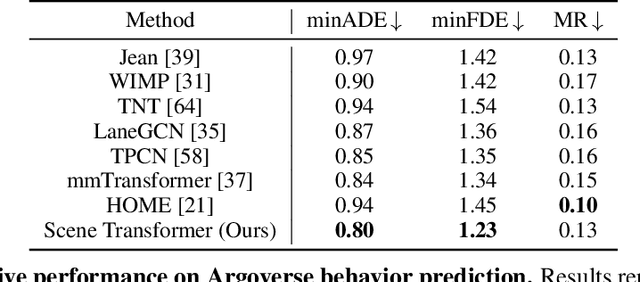
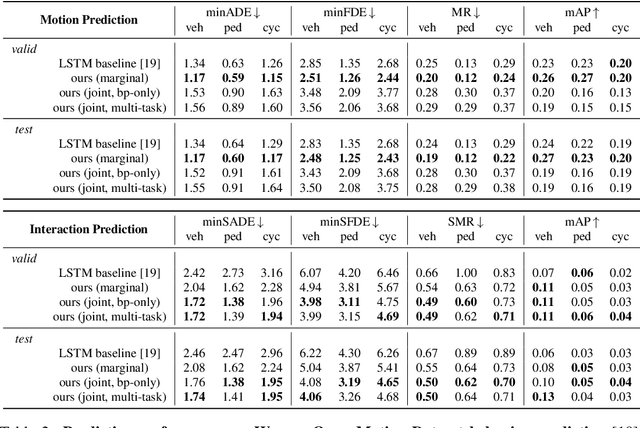

Abstract:Predicting the future motion of multiple agents is necessary for planning in dynamic environments. This task is challenging for autonomous driving since agents (e.g., vehicles and pedestrians) and their associated behaviors may be diverse and influence each other. Most prior work has focused on first predicting independent futures for each agent based on all past motion, and then planning against these independent predictions. However, planning against fixed predictions can suffer from the inability to represent the future interaction possibilities between different agents, leading to sub-optimal planning. In this work, we formulate a model for predicting the behavior of all agents jointly in real-world driving environments in a unified manner. Inspired by recent language modeling approaches, we use a masking strategy as the query to our model, enabling one to invoke a single model to predict agent behavior in many ways, such as potentially conditioned on the goal or full future trajectory of the autonomous vehicle or the behavior of other agents in the environment. Our model architecture fuses heterogeneous world state in a unified Transformer architecture by employing attention across road elements, agent interactions and time steps. We evaluate our approach on autonomous driving datasets for behavior prediction, and achieve state-of-the-art performance. Our work demonstrates that formulating the problem of behavior prediction in a unified architecture with a masking strategy may allow us to have a single model that can perform multiple motion prediction and planning related tasks effectively.
Learning Cross-Context Entity Representations from Text
Jan 11, 2020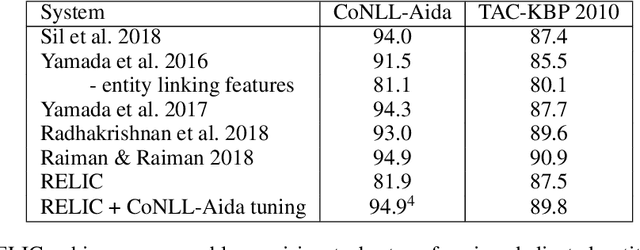
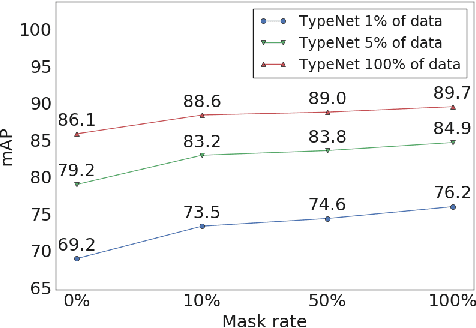

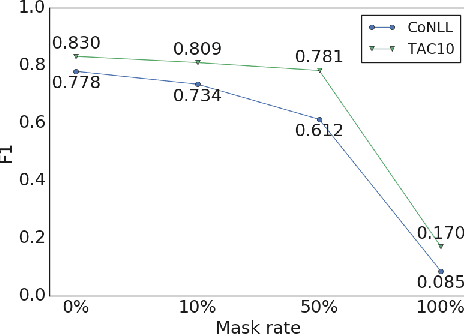
Abstract:Language modeling tasks, in which words, or word-pieces, are predicted on the basis of a local context, have been very effective for learning word embeddings and context dependent representations of phrases. Motivated by the observation that efforts to code world knowledge into machine readable knowledge bases or human readable encyclopedias tend to be entity-centric, we investigate the use of a fill-in-the-blank task to learn context independent representations of entities from the text contexts in which those entities were mentioned. We show that large scale training of neural models allows us to learn high quality entity representations, and we demonstrate successful results on four domains: (1) existing entity-level typing benchmarks, including a 64% error reduction over previous work on TypeNet (Murty et al., 2018); (2) a novel few-shot category reconstruction task; (3) existing entity linking benchmarks, where we match the state-of-the-art on CoNLL-Aida without linking-specific features and obtain a score of 89.8% on TAC-KBP 2010 without using any alias table, external knowledge base or in domain training data and (4) answering trivia questions, which uniquely identify entities. Our global entity representations encode fine-grained type categories, such as Scottish footballers, and can answer trivia questions such as: Who was the last inmate of Spandau jail in Berlin?
A Fast, Compact, Accurate Model for Language Identification of Codemixed Text
Oct 09, 2018


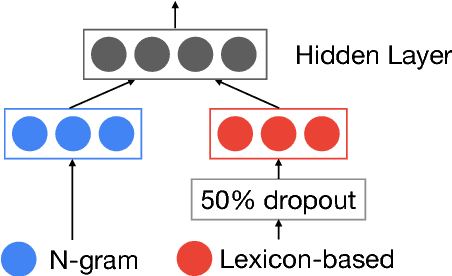
Abstract:We address fine-grained multilingual language identification: providing a language code for every token in a sentence, including codemixed text containing multiple languages. Such text is prevalent online, in documents, social media, and message boards. We show that a feed-forward network with a simple globally constrained decoder can accurately and rapidly label both codemixed and monolingual text in 100 languages and 100 language pairs. This model outperforms previously published multilingual approaches in terms of both accuracy and speed, yielding an 800x speed-up and a 19.5% averaged absolute gain on three codemixed datasets. It furthermore outperforms several benchmark systems on monolingual language identification.
Linguistically-Informed Self-Attention for Semantic Role Labeling
Aug 28, 2018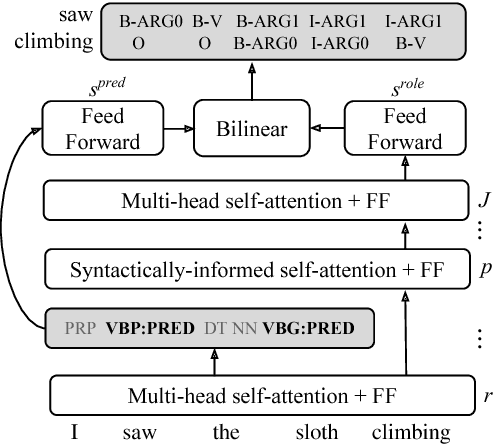
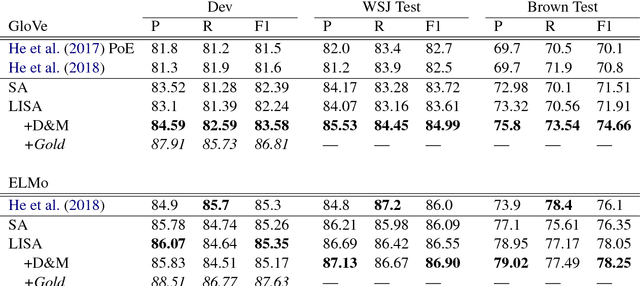
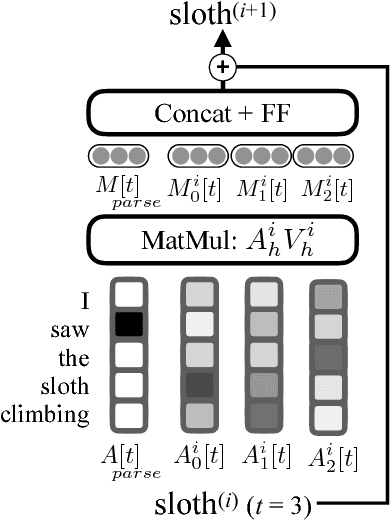
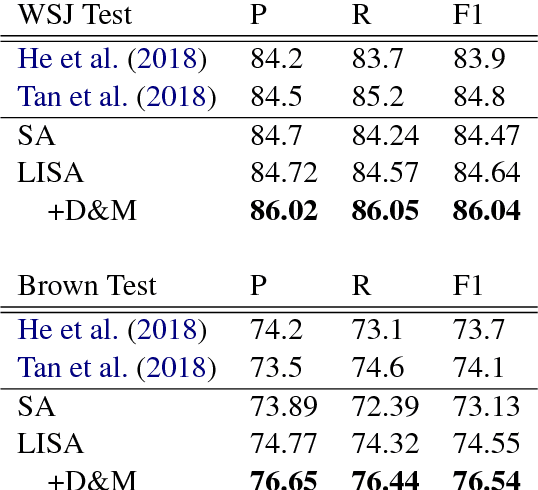
Abstract:Current state-of-the-art semantic role labeling (SRL) uses a deep neural network with no explicit linguistic features. However, prior work has shown that gold syntax trees can dramatically improve SRL decoding, suggesting the possibility of increased accuracy from explicit modeling of syntax. In this work, we present linguistically-informed self-attention (LISA): a neural network model that combines multi-head self-attention with multi-task learning across dependency parsing, part-of-speech tagging, predicate detection and SRL. Unlike previous models which require significant pre-processing to prepare linguistic features, LISA can incorporate syntax using merely raw tokens as input, encoding the sequence only once to simultaneously perform parsing, predicate detection and role labeling for all predicates. Syntax is incorporated by training one attention head to attend to syntactic parents for each token. Moreover, if a high-quality syntactic parse is already available, it can be beneficially injected at test time without re-training our SRL model. In experiments on CoNLL-2005 SRL, LISA achieves new state-of-the-art performance for a model using predicted predicates and standard word embeddings, attaining 2.5 F1 absolute higher than the previous state-of-the-art on newswire and more than 3.5 F1 on out-of-domain data, nearly 10% reduction in error. On ConLL-2012 English SRL we also show an improvement of more than 2.5 F1. LISA also out-performs the state-of-the-art with contextually-encoded (ELMo) word representations, by nearly 1.0 F1 on news and more than 2.0 F1 on out-of-domain text.
State-of-the-art Chinese Word Segmentation with Bi-LSTMs
Aug 24, 2018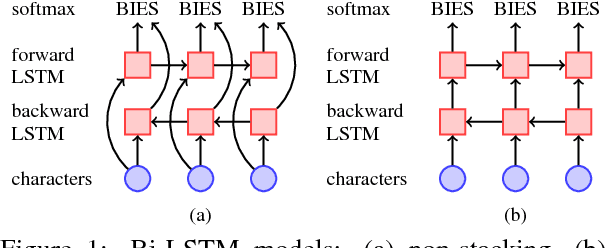

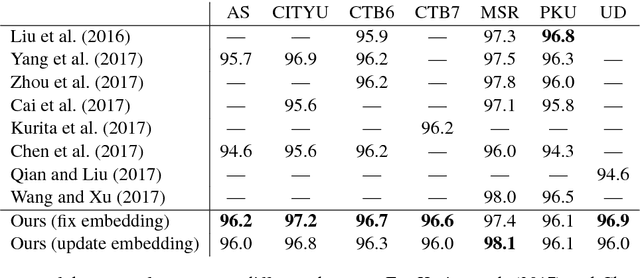

Abstract:A wide variety of neural-network architectures have been proposed for the task of Chinese word segmentation. Surprisingly, we find that a bidirectional LSTM model, when combined with standard deep learning techniques and best practices, can achieve better accuracy on many of the popular datasets as compared to models based on more complex neural-network architectures. Furthermore, our error analysis shows that out-of-vocabulary words remain challenging for neural-network models, and many of the remaining errors are unlikely to be fixed through architecture changes. Instead, more effort should be made on exploring resources for further improvement.
Adversarial Neural Networks for Cross-lingual Sequence Tagging
Aug 14, 2018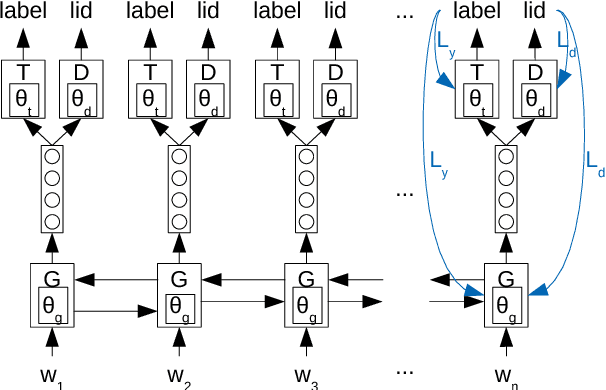
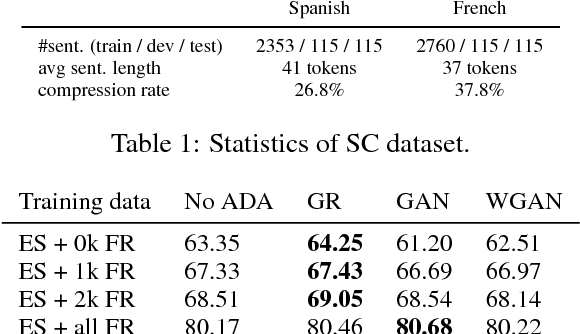
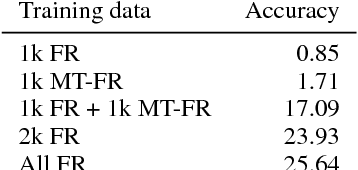

Abstract:We study cross-lingual sequence tagging with little or no labeled data in the target language. Adversarial training has previously been shown to be effective for training cross-lingual sentence classifiers. However, it is not clear if language-agnostic representations enforced by an adversarial language discriminator will also enable effective transfer for token-level prediction tasks. Therefore, we experiment with different types of adversarial training on two tasks: dependency parsing and sentence compression. We show that adversarial training consistently leads to improved cross-lingual performance on each task compared to a conventionally trained baseline.
Natural Language Processing with Small Feed-Forward Networks
Aug 01, 2017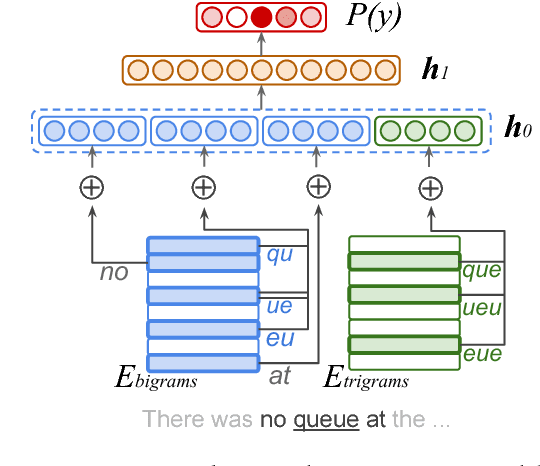
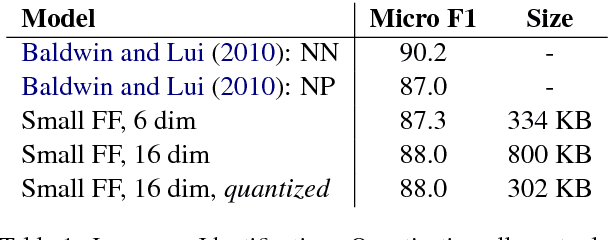
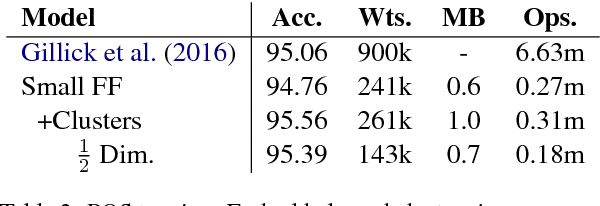

Abstract:We show that small and shallow feed-forward neural networks can achieve near state-of-the-art results on a range of unstructured and structured language processing tasks while being considerably cheaper in memory and computational requirements than deep recurrent models. Motivated by resource-constrained environments like mobile phones, we showcase simple techniques for obtaining such small neural network models, and investigate different tradeoffs when deciding how to allocate a small memory budget.
SyntaxNet Models for the CoNLL 2017 Shared Task
Mar 15, 2017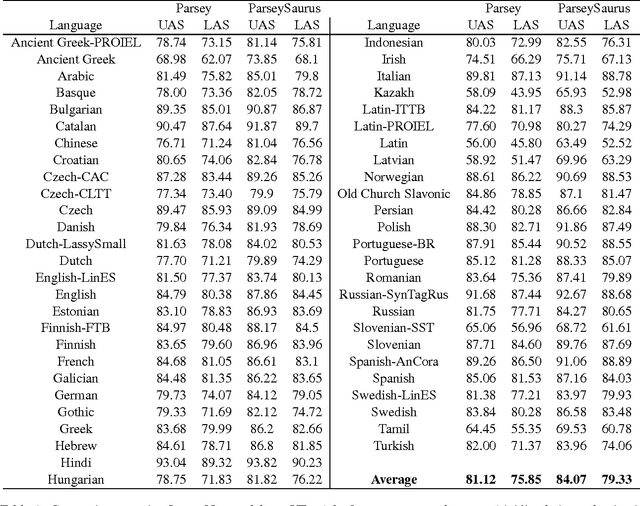
Abstract:We describe a baseline dependency parsing system for the CoNLL2017 Shared Task. This system, which we call "ParseySaurus," uses the DRAGNN framework [Kong et al, 2017] to combine transition-based recurrent parsing and tagging with character-based word representations. On the v1.3 Universal Dependencies Treebanks, the new system outpeforms the publicly available, state-of-the-art "Parsey's Cousins" models by 3.47% absolute Labeled Accuracy Score (LAS) across 52 treebanks.
DRAGNN: A Transition-based Framework for Dynamically Connected Neural Networks
Mar 13, 2017
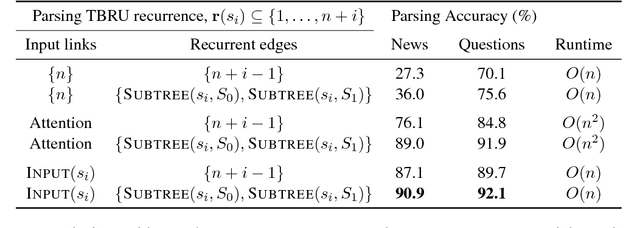
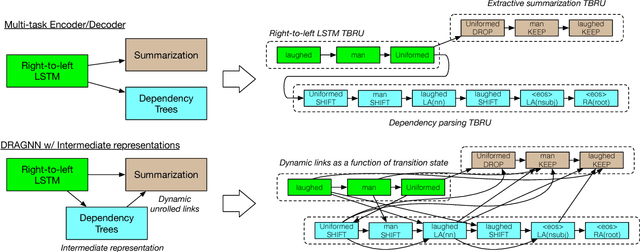

Abstract:In this work, we present a compact, modular framework for constructing novel recurrent neural architectures. Our basic module is a new generic unit, the Transition Based Recurrent Unit (TBRU). In addition to hidden layer activations, TBRUs have discrete state dynamics that allow network connections to be built dynamically as a function of intermediate activations. By connecting multiple TBRUs, we can extend and combine commonly used architectures such as sequence-to-sequence, attention mechanisms, and re-cursive tree-structured models. A TBRU can also serve as both an encoder for downstream tasks and as a decoder for its own task simultaneously, resulting in more accurate multi-task learning. We call our approach Dynamic Recurrent Acyclic Graphical Neural Networks, or DRAGNN. We show that DRAGNN is significantly more accurate and efficient than seq2seq with attention for syntactic dependency parsing and yields more accurate multi-task learning for extractive summarization tasks.
 Add to Chrome
Add to Chrome Add to Firefox
Add to Firefox Add to Edge
Add to Edge